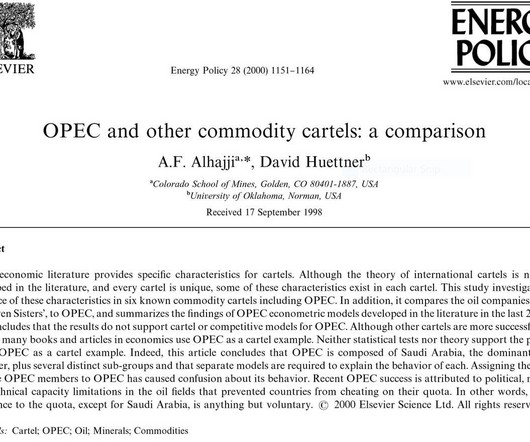Who is the Upstream Industry's Most Admired Explorer?
Rigzone
JUNE 30, 2025
by Andreas Exarheas | Rigzone Staff | Monday, June 30, 2025 | 6:54 AM EST Wood Mackenzie reveals who was crowned the 'most admired upstream explorer' in the company's latest Annual Exploration Summit Survey. Congratulations to John Ardill and the entire exploration team,” he continued.












Let's personalize your content